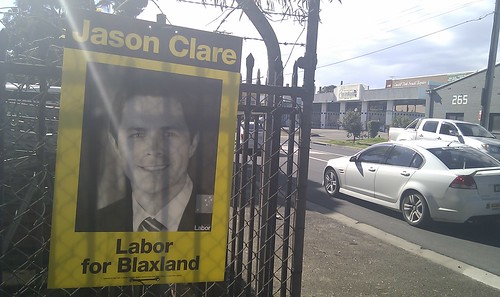Universities’ accord ‘blueprint for the next decade’: Clare
Jason Clare #JasonClare

“We all know that reform agendas can start off with a bang and then run out of puff. Reports can get put on the shelf. Part of the role of this commission, if we set it up right, is that it can help to steer and drive reform over the long term.”
Central to the accord’s agenda is the doubling of university students from 860,000 today to 1.8 million by 2050. It also wants to increase the number of people with vocational qualifications and eventually have more people who engage with both sectors.
The genesis of such an enormous growth trajectory is to meet the emerging skills needs of the nation; to be ready for the future when it arrives. Various predictions suggest that the jobs that don’t exist yet will require higher skill levels and that means more, and better, qualifications.
It also means digging deep into the pool of people who traditionally don’t go to university: poor, rural and regional, Indigenous, publicly school educated, male and low school achievement.
It means creating ambitions for those who don’t know they need them. And then it means not just getting them to university – or TAFE – but making sure they complete.
It’ll come with a pretty price tag, but Mr Clare doesn’t want to speculate at the size of it.
“I wouldn’t try to put a number on it at this point,” he says, but admits some early work on costings has begun with in the education department.
First, he and the department must prioritise the recommendations. The May budget will contain the first hint of how that is going, although sector insiders hope that an implementation committee will be the first step.
“This report is bigger than one budget. This is a plan for the next decade, and the one after that. We can’t do all of this at once.”
He points to a chart that maps out expansion over the next 25 years, which shows modest growth for the rest of the decade, but ramping up from the mid-2030s onwards.
“That generation of university students are in primary school right now. These reforms are linked to the reforms we are making in school education and in early childhood education. To meet the targets the accord sets out, it means more people need to finish school, especially those from poor backgrounds and from the regions – the ones who are falling behind in primary school now.
“We need to get them the support, so they can catch up and finish high school, and so they can go on to university.”
Mr Clare says that one of the biggest evolutions between the release of the interim report at the National Press Club last July and the final report has been around the integration of vocational and higher education.
Rolling out government subsidised places to TAFEs to deliver higher education courses is one idea. Another is the continued evolution of modern, integrated education facilities such as the institute of applied technologies in NSW, that bring together TAFE, universities and industry, such as Microsoft.
Then there are the new TAFE centres of excellence that are creating new degree apprenticeship qualifications and bachelor-equivalent higher apprenticeships that are independent of universities.
“We want 80 per cent of people to hold a university or vocational qualification – or both. Under Bob Hawke’s government, there was a massive leap in the number of kids finishing high school from about 40 per cent to almost 80 per cent,” Mr Clare said.
“This report is saying that by the middle of the century, we need 80 per cent of the workforce not just to finish school, but to have gone to TAFE or to uni. That’s a massive ask.
“To get there we need to smash down barriers; the artificial barrier between TAFE and uni and the invisible barrier that stops a lot of people from poor families and the outer suburbs and the region’s from getting to uni in the first place.”
The accord has been a year in the making. Now it’s over to Mr Clare to sell its merits, not only to the sector and its future students, but to his colleagues in Treasury and Finance who hold the purse strings.